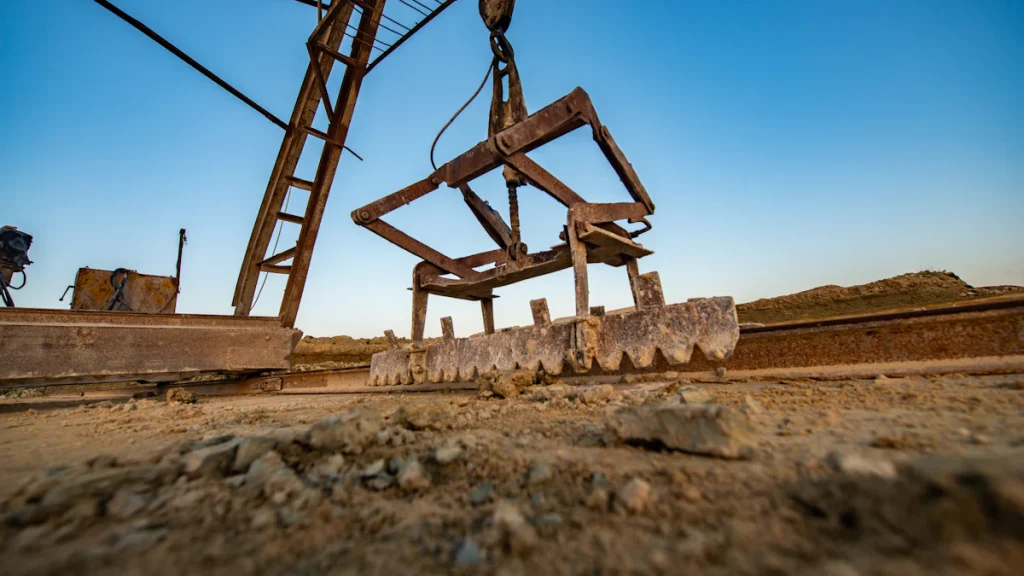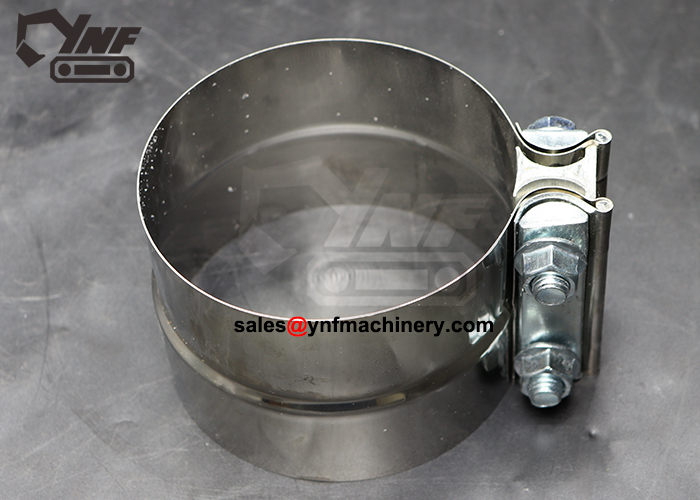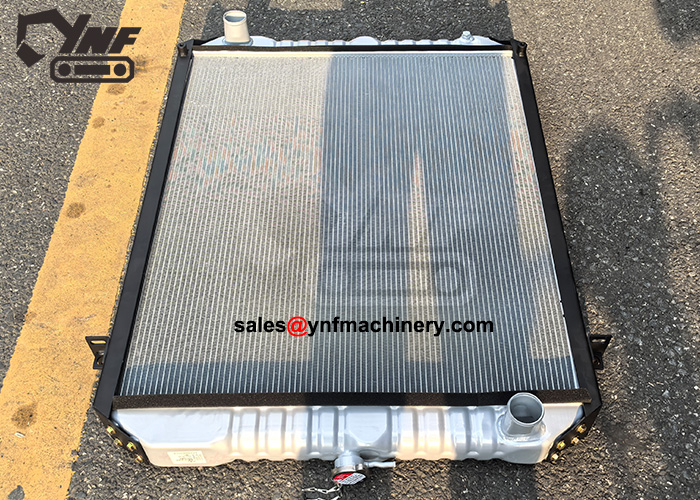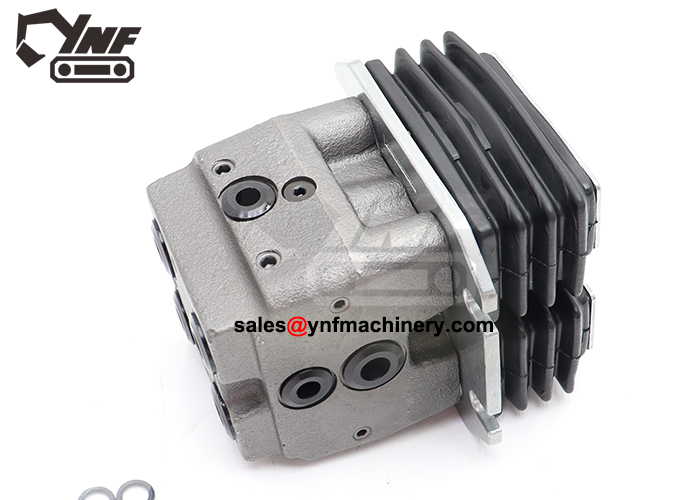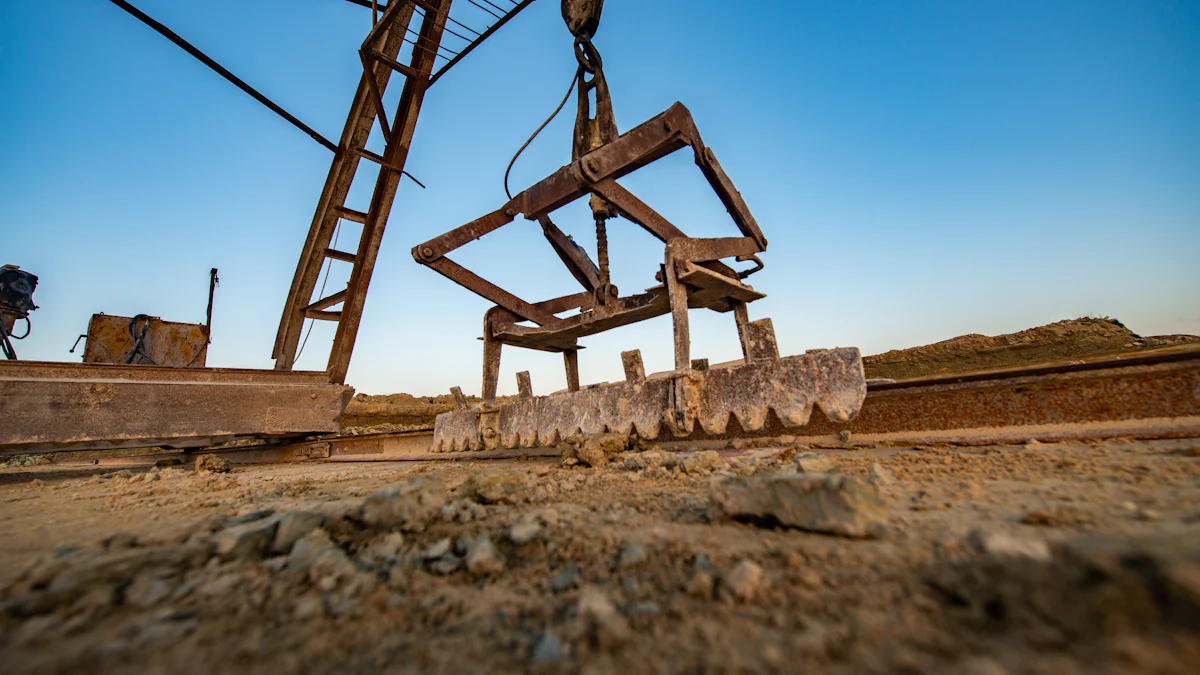
Excavator couplings play a vital role in connecting attachments to your machine, ensuring seamless operation and enhanced efficiency. The right coupling can significantly improve your productivity by reducing downtime during attachment changes and increasing the versatility of your excavator. Choosing the correct coupling also enhances safety on the job site, minimizing risks associated with improper attachment connections. For example, tilt-rotator couplings not only boost productivity by up to 35% but also improve safety by reducing the need for manual intervention in hazardous areas. Selecting the best coupling ensures your projects run smoothly and safely.
Key Takeaways
Choose the right coupling type based on your project needs: manual for simplicity, hydraulic for efficiency, and tiltrotator for versatility.
Ensure compatibility with your excavator model and attachments to avoid operational inefficiencies and safety risks.
Invest in high-quality materials to enhance durability and reduce maintenance costs over time.
Prioritize couplings that allow for quick attachment changes to minimize downtime and boost productivity.
Regularly inspect and maintain your couplings to ensure safe and reliable operation on the job site.
Consult with manufacturers or experts to make informed decisions tailored to your specific operational requirements.
Avoid prioritizing cost over quality; investing in reliable couplings can save you money and enhance safety in the long run.
Understanding Excavator Couplings
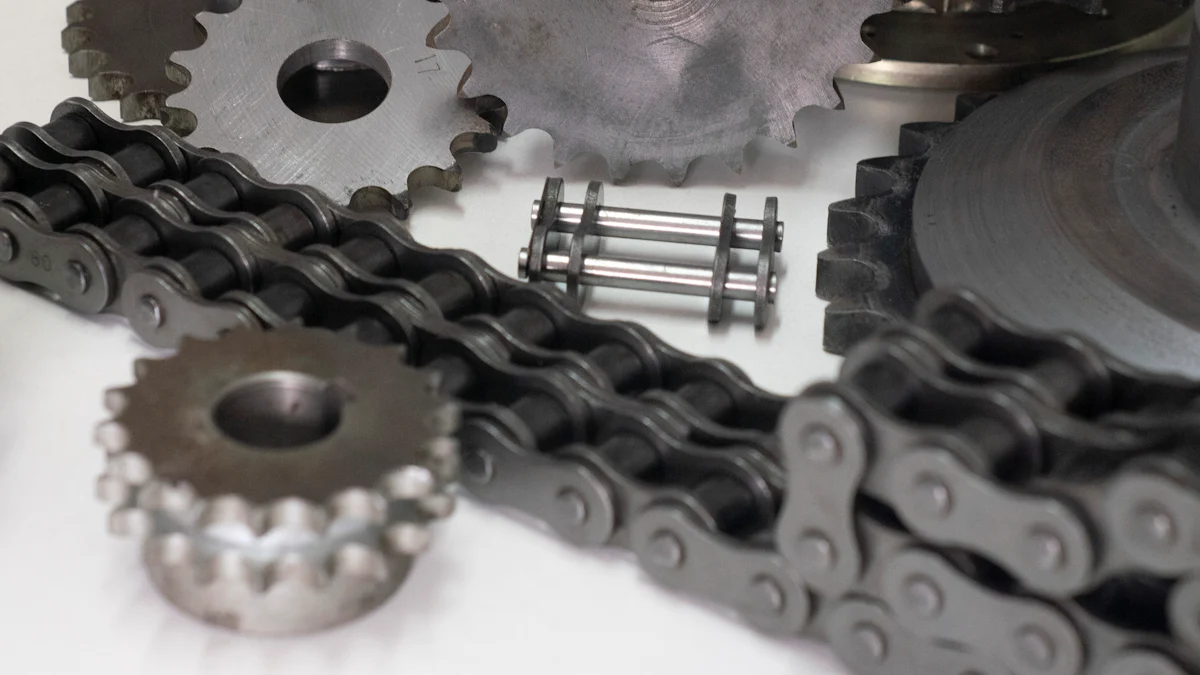
Excavator couplings are essential components that connect your machine to various attachments, enabling you to perform a wide range of tasks efficiently. Understanding the types and functions of these couplings will help you make informed decisions for your projects. Understanding the types and functions of these couplings will help you make informed decisions for your projects of excavator attachment, choosing the right excavator for your job.
Types of Excavator Couplings
Manual Couplings
Manual couplings are a straightforward and cost-effective option, often used on smaller excavators. These couplings require you to manually remove and insert pins to attach or detach tools. They work well for lighter attachments and projects where frequent changes are unnecessary. For example, if you’re working on a small landscaping project, manual couplings can be a practical choice due to their simplicity and low maintenance needs.
Hydraulic Couplings
Hydraulic couplings are ideal for larger excavators and projects that demand frequent attachment changes. These couplings allow you to switch attachments directly from the cab, saving time and reducing physical effort. They are particularly useful in urban development or large-scale construction sites where efficiency and safety are priorities. With hydraulic couplings, you can quickly adapt to different tasks, such as moving from digging to demolition, without leaving your seat.
Tiltrotator Couplings
Tiltrotator couplings offer unmatched versatility by allowing attachments to rotate and tilt. These couplings are perfect for complex tasks like grading or trenching in tight spaces. They enhance precision and reduce the need for repositioning your excavator. By using tiltrotator couplings, you can increase productivity and achieve better results in less time.
Key Functions of Excavator Couplings
Securing Attachments Effectively
Excavator couplings ensure that attachments remain securely connected during operation. A reliable coupling minimizes the risk of detachment, which can lead to accidents or equipment damage. Whether you’re using a bucket or a breaker, a strong connection is crucial for safe and efficient work.
Improving Operational Flexibility
Couplings enhance the flexibility of your excavator by allowing you to switch between different attachments quickly. This adaptability enables you to handle diverse tasks with a single machine, reducing the need for additional equipment. For instance, quick couplers make it easy to transition from digging to lifting, streamlining your workflow.
Minimizing Downtime During Attachment Changes
Time spent changing attachments can significantly impact your productivity. High-quality couplings, such as hydraulic or quick couplers, reduce downtime by simplifying the attachment process. With these couplings, you can focus more on completing your tasks and less on equipment adjustments.
Factors to Consider When Choosing Excavator Couplings
Selecting the right excavator couplings requires careful evaluation of several factors. Each project has unique demands, and understanding these considerations will help you make an informed choice.
Compatibility with Equipment
Matching Couplings to Excavator Models
Your excavator model determines the type of coupling you need. Manufacturers design couplings to fit specific models, ensuring a secure and efficient connection. Using an incompatible coupling can lead to operational inefficiencies or even equipment damage. Always check the specifications of your excavator before purchasing a coupling. For instance, hydraulic couplers are often better suited for larger excavators due to their advanced functionality.
Ensuring Compatibility with Various Attachments
Excavator couplings must work seamlessly with the attachments you plan to use. Whether you need buckets, breakers, or grapples, the coupling should accommodate them without compromising performance. Quick couplers, for example, are versatile and allow you to switch between attachments effortlessly. This flexibility is essential for projects requiring multiple tools, such as transitioning from digging to grading.
Durability and Material Quality
Importance of High-Grade Materials
The material quality of a coupling directly impacts its longevity and performance. High-grade materials, such as hardened steel, withstand heavy loads and resist wear. Investing in durable couplings reduces the risk of frequent replacements, saving you time and money in the long run. For example, hydraulic couplers, though more expensive upfront, often feature robust materials that ensure a longer lifespan.
Resistance to Wear, Corrosion, and Heavy Use
Excavator couplings operate in challenging environments, including wet or rocky terrains. Couplings with corrosion-resistant coatings and wear-resistant properties perform better under such conditions. Manual couplers, while simpler, may require more frequent maintenance in harsh environments compared to hydraulic options. Prioritize couplings designed to endure heavy use and adverse conditions to maintain consistent performance.
Project-Specific Requirements
Adapting to Specific Tasks (e.g., Demolition, Landscaping)
Different tasks demand different types of couplings. For demolition projects, hydraulic couplers provide the efficiency needed for frequent attachment changes. In contrast, manual couplers may suffice for smaller landscaping jobs where fewer tool swaps occur. Assess the nature of your project to determine the most suitable coupling type.
Considering Environmental Conditions (e.g., Wet, Rocky Terrain)
The environment where you operate also influences your choice. Wet or muddy conditions may require couplings with enhanced sealing to prevent contamination. Rocky terrains demand couplings with high impact resistance. Tiltrotator couplings, for example, excel in tight spaces and uneven ground, making them ideal for complex grading tasks. Always consider the working environment to ensure optimal performance.
Benefits of High-Quality Excavator Couplings
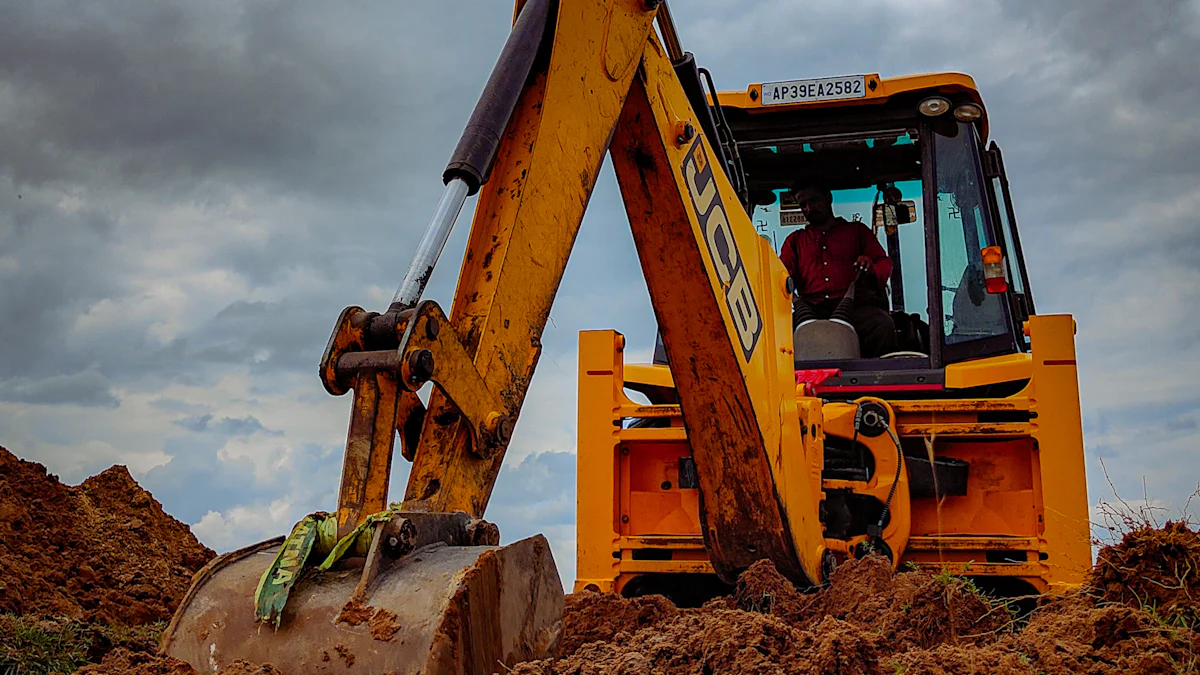
Investing in high-quality excavator couplings can transform your operations by enhancing performance, reducing maintenance needs, and improving safety. These benefits not only save time and money but also ensure smoother and more reliable project execution.
Enhanced Performance and Efficiency
Faster and Smoother Attachment Changes
High-quality couplings, such as hydraulic or quick couplers, allow you to change attachments quickly and effortlessly. This feature minimizes downtime, enabling you to focus on completing tasks efficiently. According to industry experts, hydraulic couplers can save up to 25% of total machine operating time by allowing attachment changes directly from the cab. This efficiency is particularly valuable on busy job sites where every minute counts.
Improved Precision and Control
Premium couplings enhance the precision of your excavator’s movements. Tiltrotator couplings, for instance, provide advanced functionality by allowing attachments to rotate and tilt. This capability improves control during complex tasks like grading or trenching. With better precision, you can achieve higher-quality results while reducing the need for rework.
Reduced Maintenance and Downtime
Longer Lifespan of Couplings
Durable materials, such as hardened steel, ensure that high-quality couplings withstand heavy use and harsh conditions. These couplings resist wear and corrosion, extending their lifespan significantly. For example, hydraulic couplers are designed to endure challenging environments, making them a long-term investment that reduces the frequency of replacements.
Fewer Repairs and Replacements
Reliable couplings require less maintenance, which lowers the risk of unexpected breakdowns. Regular inspection and proper lubrication further enhance their performance. By choosing robust couplings, you can avoid costly repairs and keep your equipment running smoothly. This reliability translates to fewer interruptions and more productive workdays. Learn more about the benefits of excavator parts.
Increased Safety
Secure Attachment Connections
Safety is a top priority on any job site. High-quality excavator couplings ensure secure connections between your machine and its attachments. Properly installed quick couplers, for example, prevent accidental detachment, reducing the risk of injuries or equipment damage. Manufacturers emphasize the importance of proper alignment to maintain safety standards.
Lower Risk of Equipment Failure
Premium couplings minimize the likelihood of equipment failure during operation. Hydraulic couplers, in particular, offer enhanced safety by allowing you to switch attachments without leaving the cab. This feature reduces manual intervention, keeping operators safe from potential hazards. Global demand for safer coupling solutions has driven manufacturers to develop products that meet higher safety standards, ensuring peace of mind for operators.
How to Evaluate and Compare Excavator Couplings
Choosing the right excavator coupling requires a thorough evaluation of its features, value, and expert recommendations. By carefully assessing these aspects, you can ensure that your investment meets your operational needs and enhances your machine’s performance.
Assessing Key Features
Ease of Installation and Operation
The installation process of a coupling should be straightforward. Complicated setups can lead to delays and increased labor costs. Hydraulic couplers, for instance, simplify attachment changes by allowing operators to switch tools directly from the cab. This feature eliminates the need for manual intervention, saving time and reducing physical strain. According to contractors at Viking-West, quick couplers revolutionize construction by enhancing efficiency and versatility. Always prioritize couplings that streamline operations and minimize downtime.
Compatibility with Multiple Attachments
A versatile coupling should accommodate various attachments without compromising performance. Quick couplers excel in this area, enabling seamless transitions between tools like buckets, breakers, and grapples. This adaptability is essential for projects requiring diverse tasks. Before purchasing, confirm that the coupling supports all the attachments you plan to use. Compatibility ensures smooth operations and prevents unnecessary equipment adjustments.
Comparing Pricing and Value
Balancing Cost with Quality and Durability
While budget considerations are important, prioritizing quality ensures long-term savings. High-grade materials, such as hardened steel, enhance the durability of couplings, reducing the need for frequent replacements. Manual couplers, though cost-effective upfront, may require more maintenance over time. Hydraulic couplers, on the other hand, offer advanced functionality and longevity, making them a worthwhile investment for larger projects. Evaluate the balance between initial cost and long-term value to make an informed decision.
Considering Warranties and After-Sales Support
Warranties provide assurance of a product’s reliability. Manufacturers offering comprehensive warranties demonstrate confidence in their couplings’ performance. After-sales support, including maintenance services and replacement parts, adds further value. Consulting manufacturers or dealers about these aspects can help you gauge the overall worth of a coupling. Reliable support ensures that your equipment remains operational and efficient throughout its lifespan.
Seeking Expert Guidance
Consulting Manufacturers or Dealers
Manufacturers and dealers possess in-depth knowledge about their products. They can guide you in selecting a coupling that aligns with your excavator model and project requirements. Equipment professionals at Newman Tractor emphasize the importance of understanding specific needs when choosing between manual and hydraulic couplers. Engaging with experts ensures that you make a well-informed choice tailored to your operational goals.
Reading Reviews and User Testimonials
User reviews and testimonials offer valuable insights into a coupling’s real-world performance. Operators who have used the product can highlight its strengths and potential drawbacks. Look for feedback on factors like ease of use, durability, and compatibility. This information helps you identify products that consistently meet user expectations. Relying on firsthand experiences ensures that your selection aligns with practical demands.
Common Mistakes to Avoid When Choosing Excavator Couplings
Ignoring Compatibility
Overlooking Excavator Specifications
Failing to match couplings with your excavator’s specifications can lead to operational inefficiencies or even accidents. Each excavator model has unique requirements, and using an incompatible coupling may result in poor performance or damage to your equipment. For example, hydraulic couplers designed for larger machines may not function properly on smaller excavators. Always verify the compatibility of the coupling with your machine before making a purchase.
Failing to Test Couplings with Attachments
Testing couplings with the attachments you plan to use is essential. Without proper testing, you risk discovering issues during operation, which can cause delays or safety hazards. A poorly fitted coupling may fail to secure the attachment, increasing the likelihood of accidents. In one tragic incident, a worker lost their life because a quick coupler failed to hold the bucket securely. The bucket detached and caused a fatal accident. Testing ensures that the coupling performs reliably under real-world conditions.
Prioritizing Cost Over Quality
Risks of Choosing Cheaper, Low-Quality Couplings
Opting for low-cost couplings might seem like a good way to save money, but it often leads to higher risks. Cheaper couplings are typically made from inferior materials, making them prone to wear and failure. A malfunctioning coupling can cause attachments to detach unexpectedly, endangering workers and equipment. Manufacturers emphasize the importance of investing in high-quality couplings to avoid such risks. Safety should always take precedence over cost.
Long-Term Costs of Frequent Replacements
Low-quality couplings may save you money initially, but they often require frequent replacements. Over time, these repeated expenses can exceed the cost of a durable, high-quality coupling. Additionally, downtime caused by coupling failures can disrupt your projects and increase labor costs. By choosing a reliable coupling upfront, you can reduce long-term expenses and maintain consistent productivity.
Neglecting Maintenance Requirements
Importance of Regular Inspections and Lubrication
Regular maintenance is crucial for ensuring the longevity and performance of your couplings. Inspections help identify wear, corrosion, or other issues before they lead to failures. Lubrication reduces friction and prevents damage to moving parts. Many accidents occur because operators neglect these basic maintenance tasks. For instance, failing to secure the safety lock on a quick coupler can result in unintentional drops, which often happen within seconds of connecting an attachment. Routine checks and proper care can prevent such incidents.
Choosing Couplings with Minimal Upkeep Needs
Some couplings require more maintenance than others. Manual couplings, for example, may need frequent adjustments and inspections, especially in harsh environments. Hydraulic couplers, while more advanced, also demand regular care to function optimally. When selecting a coupling, consider its maintenance requirements and your ability to meet them. Couplings with minimal upkeep needs can save you time and effort while ensuring reliable performance.
Choosing the right coupling ensures your excavator operates safely and efficiently, leading to successful project outcomes. You must evaluate compatibility with your machine and attachments, prioritize durable materials, and consider the specific demands of your tasks. High-quality couplings improve performance, reduce downtime, and enhance safety on-site. Investing in reliable options saves time and money in the long run. Seek advice from manufacturers or professionals to make informed decisions. Explore trusted coupling solutions today to optimize your equipment and achieve better results.

